
PhD defense
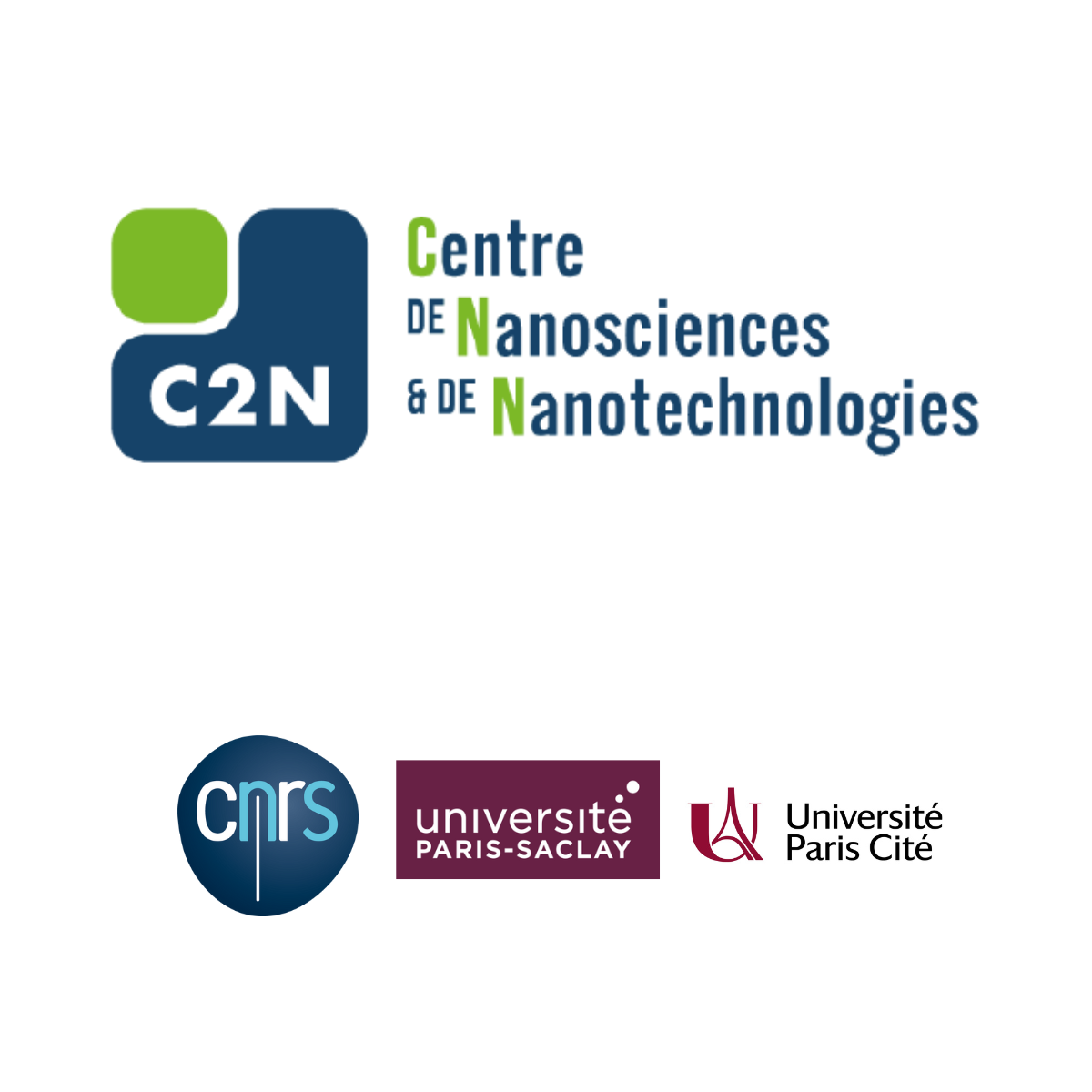
(in french) Intégration hétérogène de GaAs sur Si à partir de nano-germes : étude de la nucléation et de la croissance de micro-cristaux sur substrats Si (001) et (111)
C2N site Orsay, salle 44, Orsay CedexPhD defense
Jury members :
Daniel BOUCHIER, Directeur de Recherche Emérite, C2N, Directeur de thèse
Charles RENARD, Chargé de Recherche, C2N, CoDirecteur de thèse
Chantal FONTAINE, Directeur de Recherche, LAAS (Laboratoire d’analyse et d’architecture des systèmes), Rapporteur
Eric LE BOURHIS, Professeur,Institut P’,Rapporteur
Denis MENCARAGLIA, Directeur de Recherche, GEEPS,Examinateur
Thierry BARON, Directeur de Recherche, LTM, Examinateur
Abstract :
L’intégration du GaAs sur Si est un des défis majeurs des 40 dernières années puisqu’elle permettrait de combiner les nombreux avantages du Si, dont notamment son bas coût, avec les propriétés de haute mobilité et de gap direct du GaAs. Les cellules photovoltaïques multi-jonctions à base de matériau III-V permettent d’obtenir les plus hauts rendements de conversion photovoltaïque. Cependant, leur coût de fabrication élevé est un aspect limitatif de leur utilisation. Nous nous sommes intéressés ici à une étude préliminaire visant à réaliser leur intégration sur substrat Si. In fine, l’objectif sera la réalisation de cellules tandems GaAs/Si et GaAs/Ge sur substrat Si. L’intégration du GaAs et du Ge sur Si conduit cependant à la formation de dislocations et de fissures du fait de leurs désaccords de maille et de leurs différences de coefficient d’expansion thermique respectifs. De plus, du fait de la différence de polarité entre le GaAs et le Si, cette intégration conduit également à la formation de domaine d’anti-phase. Nous présentons dans cette étude un procédé d’intégration permettant à la fois l’élimination de ces défauts et le passage du courant entre le matériau épitaxié et le Si. Ce procédé est basé sur l’utilisation d’ouvertures de tailles nanométriques dans une silice fine, qui nous permet ainsi de réaliser la croissance du GaAs sur Si sous forme de cristaux, par épitaxie latérale à partir de nano-germes de GaAs ou de Ge. Pour ce faire, nous utilisons l’épitaxie par jet chimique sans gaz vecteur qui est une technique de croissance permettant une bonne sélectivité. La croissance sera tout d’abord étudiée dans des ouvertures aléatoires, facilement réalisées in-situ sous ultravide, puis dans des ouvertures localisées de tailles fixées. Ces dernières sont obtenues suite à une procédure longue et complexe qui repose sur des étapes de nettoyage chimique, d’enrésinement, de lithographie électronique, de développement et de gravure ionique réactive. Nous présenterons les résultats de la croissance directe de cristaux de GaAs dans les ouvertures sur Si (001) et Si (111), et également à partir de nano-germes de Ge. Ce procédé d’intégration a permis l’élimination des trois types de défauts précédemment indiqués, et nous avons obtenu de très bons résultats notamment lors de l’intégration dans les ouvertures localisées sur Si (111). Nous verrons que la morphologie des nano-germes de Ge peut toutefois être problématique lors de la reprise d’épitaxie du GaAs. La possibilité de passage du courant par effet tunnel à travers la silice fine sera ensuite vérifiée et le dopage des cristaux de GaAs avec du Si sera également présenté.

(in french) Nano-pince optique intégrée contrôlée par plasmon de surface localisé pour le piégeage de nanoparticules
C2N site Orsay, salle 44, Orsay CedexPhD defense
Jury members :
Vy YAM, MCF, Université Paris-Sud, Directeur de thèse
Benoît CLUZEL, Maître de Conférences,Université Bourgogne Franche Comté, Examinateur
Anne-Marie HAGHIRI-GOSNET, Directeur de Recherche, Université Paris-Sud, Examinateur
Yannick DE WILDE, Directeur de Recherche, ESPCI, Examinateur
Béatrice DAGENS, Directeur de Recherche, Université Paris-Sud, Examinateur
Giovanni MAGNO, Chercheur ,Université Paris-Sud, Examinateur
Jérôme WENGER, Chargé de Recherche, Aix Marseille Université, Rapporteur
Taha BENYATTOU, Directeur de Recherche, INSA,Rapporteur
Abstract :Les travaux de cette thèse portent sur la conception et la réalisation de nanopinces optiques intégrées basées sur l’utilisation du champ proche pour piéger des nanoparticules de taille inférieure à 1 µm.
Le dispositif proposé exploite l’existence d’un couplage fort entre un guide d'onde SOI et une chaîne d’ellipses d’or afin d’exciter efficacement des plasmons de surface localisés et ainsi créer une énergie potentielle suffisamment intense pour piéger des billes de polystyrène.
Des simulations par la méthode FDTD permettent d’optimiser la géométrie de la structure et d’extraire des valeurs de constante de raideur et de potentiel d’énergie de piégeage. L’efficacité ainsi que la stabilité de piégeage du système sont évaluées en présence de particules de taille comprise entre 20 nm et 1 µm. Les travaux mettent en évidence qu’avec une simple ou une double chaîne plasmonique, des billes de polystyrène sont piégées de manière efficace lorsqu’elles ont une dimension comprise entre 50 et 250 nm de rayon avec une puissance incidente de 10 mW. Utiliser seulement deux ellipses d’or au-dessus d’un guide d’onde SOI localise mieux le champ électrique entre elle. Cette structure peut alors être utilisée comme capteurs et détecter le changement d’indice optique du milieu environnant ou encore la variation de la taille de la bille à piéger. Le piégeage de billes métalliques de dimension supérieure à 15 nm de rayon est également présenté. Il est aussi possible de concevoir des dispositifs permettant de contrôler la position d’une particule piégée le long d’une chaîne d’ellipses d’or en faisant varier la longueur d’onde de la lumière injectée dans le guide.
Des dispositifs de piégeage sont fabriqués en salle blanche en exploitant les résultats obtenus par simulation et sont caractérisés sur un banc d'optique guidée. Des mesures de transmission optique détermine la longueur d'onde de résonance de la chaîne plasmonique, qui se traduit par une forte diminution de la transmission. Des expériences de piégeage optique mettent en évidence la possibilité de piéger de manière stable des nanoparticules diélectriques. Le suivi de la trajectoire des particules en fonction du temps permet de tracer des histogrammes de position et ainsi d’extraire les valeurs de l'énergie potentielle et de la constante de raideur du piège. Ces valeurs, déterminées expérimentalement, sont plus faibles que celles attendues par simulation. Cet écart peut être expliqué par la présence de vibrations mécaniques du banc de caractérisation optique.
Ce dispositif de piégeage ouvre des perspectives d’applications dans le domaine des capteurs tout intégrés de taille nanométrique à faible puissance incidente.
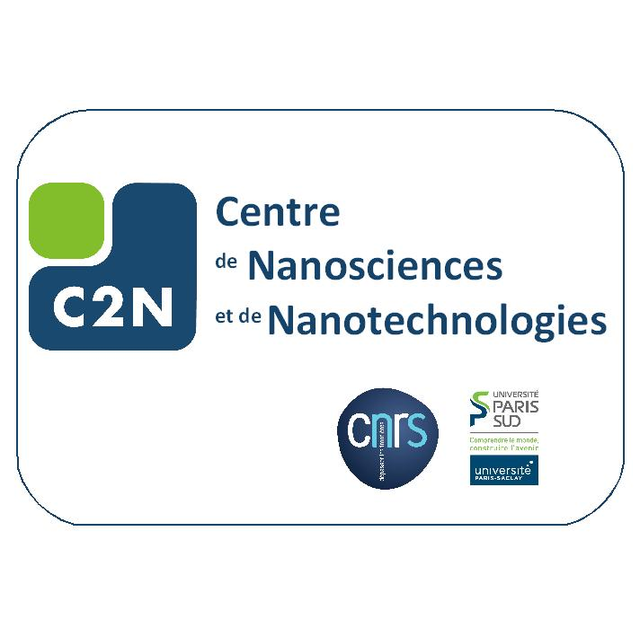
Integration of a polarizable interface for electrophoretic separation in a microfluidic device
C2N site Orsay, salle 44, Orsay CedexPhD defense
Ming ZHANG, MCF, Université Paris-Sud - Centre de Nanosciences et de Nanotechnologies, Directeur de thèse
Pierre JOSEPH, Chargé de Recherche, Laboratoire d'analyse et d'architecture des systèmes CNRS, Examinateur
Wilfried UHRING, Professeur, Université de Strasbourg - Laboratoire ICube - UMR 7357, Examinateur
Philippe LECOEUR, Professeur, Université Paris-Sud - Centre de Nanosciences et de Nanotechnologies, Examinateur
Anne-Marie HAGHIRI-GOSNET, Directeur de recherche, Centre de Nanosciences et de Nanotechnologies - CNRS, Invité
Antoine PALLANDRE, Professeur, Université Paris-Sud - Laboratoire de Chimie Physique UMR 8000 CNRS, Invité
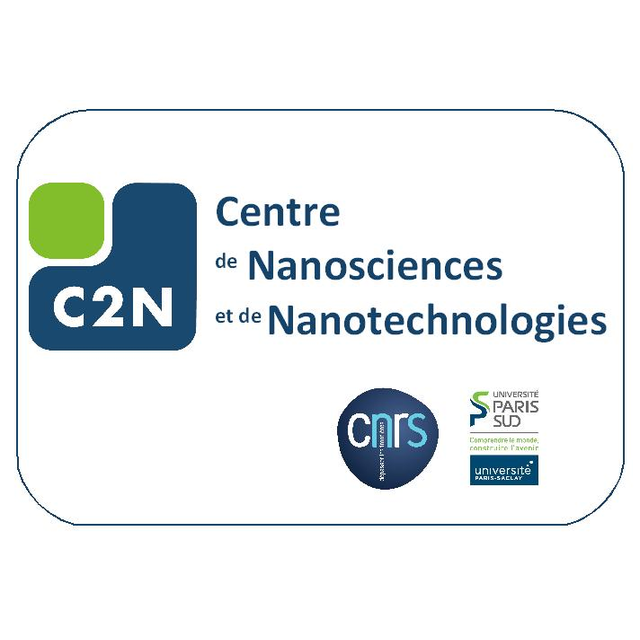
(in french) Nonlinearités optiques du second ordre dans le silicium
IOGS, Amphithéâtre de l'Institut d'Optique Graduate School,PhD defense
Jury members :
Laurent VIVIEN, Directeur de Recherche, Université Paris-Sud, Directeur de thèse
Philippe DELAYE, Directeur de Recherche, Institut d'Optique Graduate School, Examinateur
Frédéric BOEUF, Senior Manager, STMicroelectronics, Examinateur
Philippe ABSIL, Program Director, IMEC, Examinateur
Vincent LAUDE, Directeur de Recherche, Université de Franche-Comté, Rapporteur
Christophe PEUCHERET, Professeur, Université de Rennes 1,Rapporteur
Abstract :
L’explosion de la demande en données a imposé de nouvelles exigences en terme de débit de transmission qui sont de plus en difficiles à satisfaire sans accroître considérablement les consommations énergétiques dans les centres de données, points névralgiques des réseaux de télécommunications. Dans ce contexte, la photonique silicium est considérée comme la solution la plus adaptée pour répondre de ces problématiques en remplaçant les interconnexions métalliques par des liaisons optiques à base de silicium. Le modulateur électro-optique constitue l’un des composants clés de ces liaisons optiques. Cependant, la centrosymétrie du silicium empêche l’exploitation de l’effet Pockels, un phénomène d’optique non linéaire très efficace dans la conception de modulateurs à très grande bande passante et à faible consommation énergétique. Cette limitation peut être néanmoins contournée lorsque des contraintes mécaniques sont appliquées au silicium de façon à briser sa symétrie d’inversion. Plusieurs travaux théoriques et expérimentaux ont alors été entrepris récemment pour mettre en évidence et quantifier l’effet Pockels induit par contraintes dans le silicium. Mais la nature semi-conductrice du silicium rend l’analyse de l’effet Pockels profondément complexe et cela a soulevé une controverse quant à sa réelle existence dans le silicium contraint. En effet, l’influence des porteurs libres dans le silicium et aux interfaces engendrent un fort signal de modulation, noyant la signature de l’effet Pockels. Pour enrayer les effets de porteurs, la solution apportée par le travail de thèse a été d’étudier le signal de modulation à hautes fréquences (> 5 GHz). Plusieurs études hyperfréquences de l’effet Pockels ont donc été menées dans des structures photoniques en silicium contraint et seront présentées dans ce manuscrit de thèse. Les premières études ont été réalisées sur une plate-forme SOI et les résultats expérimentaux ont permis de mettre en évidence la présence d’un signal de modulation électro-optique à hautes fréquences et dont l’intensité dépend clairement de l’orientation cristallographique du silicium et de l’amplitude de la contrainte appliquée sur celui-ci. Sur la base d’un modèle théorique décrivant le tenseur de susceptibilité électrique du second ordre χ^((2)), un modèle multiphysique a été développé et a permis de décrire de manière très précise à la fois les résultats expérimentaux et la distribution spatiale du χ^((2)) dans des guides d’onde silicium contraints. Ces travaux ont également permis de montrer que les faibles intensités des champs électriques appliqués dans les guides d’onde silicium, dues à la distribution des porteurs, sont en grande partie responsable de la faible efficacité de modulation par effet Pockels. Une seconde étude a donc été menée sur une plate-forme SOI modifiée et permettant la conception de circuits électriques plus performants avec des champs électriques générés plus intenses. Les résultats expérimentaux obtenus montrent une amélioration d’un facteur 20 de l’efficacité de modulation par effet Pockels en comparaison des premières études. De plus, le modèle multiphysique a de nouveau permis de décrire ces résultats, renforçant donc davantage sa validité. L’ensemble de ces travaux ouvrent notamment comme perspectives la possibilité d’obtenir un diagramme de l’œil électro-optique dans la mesure où une contrainte plus importante est appliquée aux guides d’onde silicium. De plus, le modèle décrivant le tenseur de susceptibilité électrique du second ordre χ^((2)) peut également être exploité pour décrire le phénomène de génération de seconde harmonique en optique guidée dont l’existence reste encore ambiguë à l’heure actuelle.
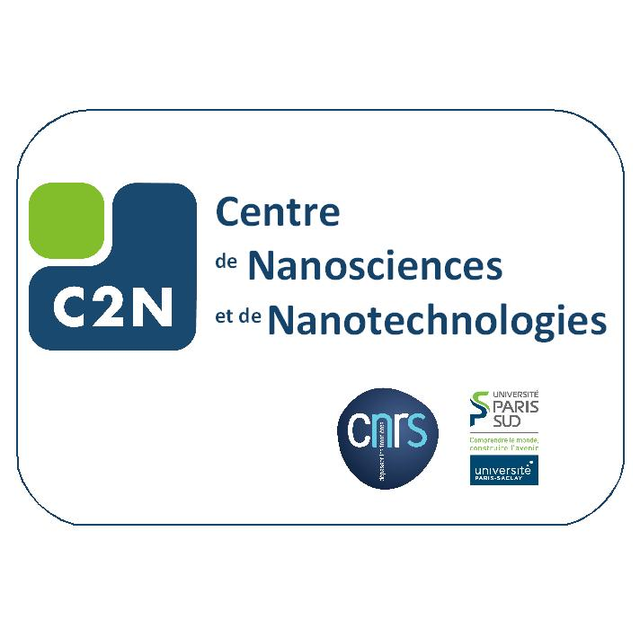
(in french) Etude théorique des hétérojonctions planaires de dichalcogénures de métaux de transition, et de leurs applications pour des transistors à basse consommation
C2N site Orsay, salle Salle visioconférence, Orsay CedexPhD defense
Philippe DOLLFUS, DR2, CNRS, Directeur de thèse
Marco PALA, Chargé de Recherche,CNRS, CoDirecteur de thèse
Bernard PLAçAIS, Directeur de Recherche,CNRS, Examinateur
Frédéric ANIEL, Professeur, CNRS, Examinateur
Yann-Michel NIQUET, Ingénieur de Recherche, CEA, Rapporteur
Raphaël CLERC, Professeur, Université Jean Monnet, Saint-Etienne, Rapporteur
La miniaturisation des MOSFET a permis une forte diminution des transistors et des puces, ainsi qu’une augmentation exponentielle des capacités de calcul. Cette miniaturisation ne peut néanmoins continuer ainsi: de nos jours, un microprocesseur peut contenir des dizaines de milliards de transistors et la chaleur dégagée par ces composants peut fortement détériorer ses performances. De plus, du fait de leur principe même de fonctionnement, la tension d’alimentation des MOSFET ne peut être réduite sans en impacter les performances. De nouvelles architectures telles que le TFET -basé sur l’effet tunnel bande-à-bande et pouvant fonctionner à des tensions d’alimentation très basses- ainsi que de nouveaux matériaux pourraient donc apporter une alternative au MOSFET silicium. Les monocouches de dichalcogènures de métaux de transitions (TMDs) -des semiconducteurs à bande interdite directe d’environ 1 à 2 eV- possèdent un fort potentiel pour l’électronique et la photonique. De plus, dans le cas de contraintes appropriées, ils peuvent conduire un alignement de bandes présentant un broken-gap; une configuration permettant de surpasser les limites habituelles du TFETs, à savoir de faibles courants dus à l’effet tunnel sur lequel ces dispositifs reposent.
Dans ce travail de thèse, des hétérojonctions planaires de TMD sont modélisées via une approche atomistique de liaisons fortes, et une configuration broken-gap est observée dans deux d’entre elles (MoTe2/MoS2 et WTe2/MoS2). Leur potentiel dans le cadre de transistors à effet tunnel (TFETs) est évalué au moyen de simulations de transport quantique basées sur un modèle TB atomistique ainsi que la théorie des fonctions de Green hors-équilibre.
Des TFETs type-p et type-n basés sur ces hétérojonctions sont simulés et présentent des courants ON élevés (ION > 10^3 µA/µm) ainsi que des pentes sous-seuil extrêmement raides (SS < 5 mV/dec) à des tensions d’alimentation très faibles (VDD = 0.3 V). Plusieurs architectures novatrices basées sur ces TFETs et découlant de la nature 2D des matériaux utilisés sont également présentées, et permettent d’atteindre des performances encore plus élevées.
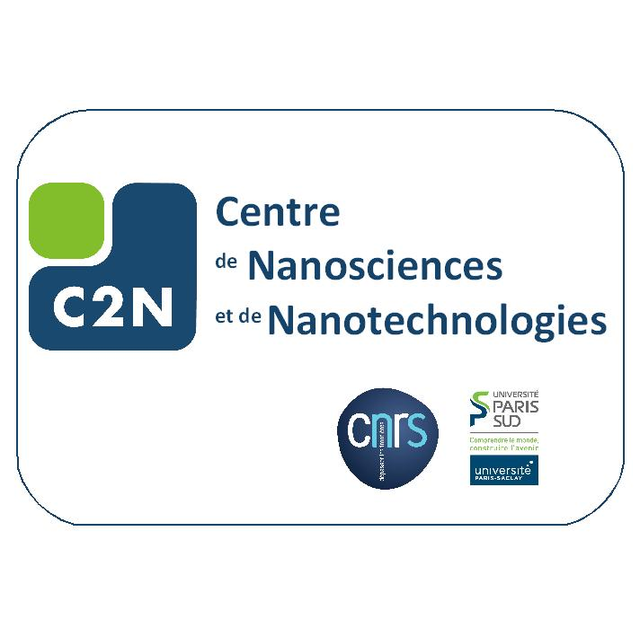
Nanoscale analyses of semiconductor nanowire properties for optimization of third generation photovoltaic converters
Amphithéâtre de l'IPVF (Institut Photovoltaïque d'Ile-de-France), salle 44, Orsay CedexPhD defense
Jury members :
Maria TCHERNYCHEVA, Directeur de Recherche, Université Paris-Sud,Directeur de thèse
Anna FONTCUBERTA I MORRAL, Professeur, École Polytechnique Fédérale de Lausanne,Rapporteur
Julien PERNOT, Professeur, Université Grenoble Alpes, Rapporteur
François JULIEN, DRCE,Université Paris-Sud,Examinateur
Jean-Yves DUBOZ, Directeur de Recherche,CNRS-CRHEA,Examinateur
Heinz SCHMID,Research Staff Member,IBM Reasearch Examinateur
Abstract :
Although III-V nanowires (NWs) are recognized as promising candidates for the development of new generation solar cells thanks to their very attractive optical properties, the expected performance improvement over their 2D counterparts has not yet been demonstrated. To understand the origin of the existing gap between the theoretical predictions and the experimental demonstrations, investigation of the material properties down to the nanometric scale is fundamental. Nanoscale analyses are expected to elucidate the limiting factors (e.g. the electrical properties of internal p-n junctions, the wire-to-wire homogeneity and eventual failures) and to propose solutions for enhancing the performance of NW photovoltaic (PV) devices.
This PhD thesis applies the electron beam probe techniques to get access to the key parameters governing the PV conversion at a single NW level in order to further optimize the properties of III-V NWs grown on Si.
First, GaAs and AlGaAs NWs containing a radial junction are investigated at the nanoscale and their internal structure is optimized accounting for the feedback from the experimental findings. The characterization of mm-sized devices confirms the improvement of the device performance at the macroscopic level.
Then InGaP NWs grown by a novel Template Assisted Selective Epitaxy (TASE) method containing an axial junction are studied. The doping level in the ternary alloy is estimated by the electron beam induced current microscopy and the photovoltaic response of these structures is demonstrated for the first time. The electrical properties of GaAs NWs grown with the same technique are also characterized.
Finally, InP/InGaP dual junction NWs are characterized to demonstrate the first fully nanostructured tandem solar cell. Although an electrical activity is observed under excitation in both top and bottom junctions, the tandem performance is limited by the electrical properties of the tunnel junction which connects them.
Mots clés en anglais :
Nanowire,solar cell,third generation
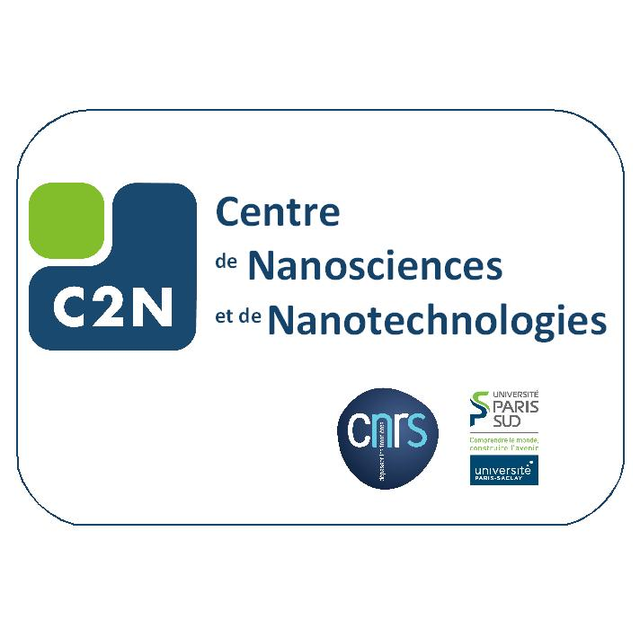
(in french) Développement d’un microdispositif magnétique pour le contrôle et la détection de complexes immunologiques à base de nanoparticules magnétiques
Amphithéâtre de l'IPVF (Institut Photovoltaïque d'Ile-de-France), ,PhD defense
Jury members :
Mehdi AMMAR, MCF, Université Paris-Sud, Directeur de thèse
Laurent MALAQUIN, Directeur de Recherche, Université Paul Sabatier, Rapporteur
Jean-François MANCEAU, Professeur, Université de Franche-Comté, Rapporteur
Yong CHEN, Directeur de Recherche, Ecole Normale Supérieure, Examinateur
Olivier FRANçAIS, Professeur, Université Paris-Est Marne-La-Vallée, Examinateur
Josep SAMITIER MARTI, Professeur, Université de Barcelone,Examinateur
Claire SMADJA, Professeur, Université Paris-Sud, Examinateur
Emile MARTINCIC, Maître de Conférences, Université Paris-Sud, Invité
Abstract :
L’objectif de cette thèse est la fabrication d’un microdispositif magnétique pour la détection et la manipulation d’éléments biologiques à base de nanoparticules magnétiques en conditions microfluidiques. Il a pour but d’intégrer des fonctions de base de contrôle et détection magnétique, pour atteindre des mesures spécifiques, stables, rapides et reproductibles. En effet, la technique d’immunodosage couplée à des nanoparticules magnétiques, bien connue dans la littérature, nécessite un contrôle du déplacement de ces dernières pour les fonctionnaliser efficacement et créer un complexe biologique encapsulant une molécule cible (biomarqueur). Dans notre cas une molécule modèle pour le domaine de la biodéfense a été utilisée : l’ovalbumine. Pour contrôler le champ magnétique nécessaire pour la capture des complexes magnétiques, nous avons opté pour l’utilisation de microbobines intégrées aux dispositifs fluidiques et comparé cette technique originale avec d’autres plus conventionnelles. Pour détecter un complexe biologique, la fluorescence est largement utilisée en biologie, mais cette technique ne permet pas une intégration complète pour un dispositif autonome. Dans cette optique, nous proposons la détection des complexes à base de nanoparticules magnétiques en relevant la variation de l’inductance d’un microcircuit magnétique refermant une chambre microfluidique contenant ces complexes immunologiques. Le dimensionnement des microbobines de contrôle par simulation a permis de déterminer les paramètres permettant d’obtenir le champ magnétique le plus adapté au contrôle des complexes biologiques. Dans le cas des microbobines utilisées pour la détection, des branches magnétiques micrométriques ont été insérées autour des microbobines pour créer un circuit de détection magnétique encore plus sensible. La réalisation de ces dispositifs a impliqué l’intégration de matériaux et de structures de nature fortement hétérogène, et leur assemblage a nécessité de résoudre de nombreux verrous technologiques. L’enjeu a été de déterminer l’ensemble des étapes successives et nécessaires pour un procédé de microfabrication fiable et reproductible. Pour montrer l’intérêt des dispositifs de capture des nanoparticules magnétiques, des tests immunologiques ont été réalisés tout d’abord en microtubes pour les comparer à ceux réalisés dans un circuit fluidique à l’aide d’aimant externe puis de microbobines intégrées. Dans ce dernier cas, une optimisation considérable a été validée en termes de réduction de temps d’incubation, de reproductibilité des mesures et de limites de détection équivalentes à l’état de l’art pour l’ovalbumine. Pour le dispositif de détection magnétique, des premières expériences de caractérisation électrique ainsi que des études en concentration de nanoparticules magnétiques ont été réalisées et comparées aux résultats obtenus par simulation. Pour la preuve de concept, un démonstrateur de détection de complexes magnétiques a été également finalisé validant la possibilité d’intégration du microcircuit magnétique dans un dispositif fluidique. Il a validé également l’obtention d’une gamme de sensibilité remarquable corrélée à la présence des complexes magnétiques. Ses caractéristiques ont été confrontées à celles obtenues par les simulations et discutées en tenant compte de toutes les étapes critiques du procédé de microfabrication.

(in french) Dynamique et ingénierie de la photostriction dans des microdispositifs à base de films minces épitaxiés d'oxydes ferroélectriques
C2N site Orsay, salle 44, Orsay CedexPhD defense
Jury members :
Philippe LECOEUR, PR1, Université Paris Saclay, Directeur de thèse
Thomas CORNELIUS, Chargé de Recherche, Universités d'Aix-Marseille et de Toulon, Examinateur
Antoine BARBIER, Directeur de Recherche, CEA Saclay, Examinateur
Pascal RUELLO, Professeur, Le Mans Université, Rapporteur
Houssny BOUYANFIF, Maître de Conférences, UNIVERSITÉ DE PICARDIE JULES VERNE, Rapporteur
Sylvia MATZEN, Maître de Conférences, Université Paris Saclay, Examinateur
Brahim DKHIL, Maître de Conférences, CentraleSupélec, Invité
Abstract :
Les matériaux ferroélectriques sont de bons candidats pour réaliser des microdispositifs photostrictifs, capables de se déformer mécaniquement sous éclairement. En effet, lorsqu’ils sont soumis à un rayonnement d’énergie supérieure à leur bande interdite, les charges photoinduites sont séparées par le champ électrique interne du matériau qui dépend de sa polarisation rémanente. Cette séparation de charges génère alors une modification photoinduite du champ électrique et par conséquent une déformation puisque le matériau ferroélectrique est aussi piézoélectrique. Dans cette thèse, le matériau ferroélectrique Pb(ZrxTi1-x)O3 (PZT) a été choisi pour son coefficient piézoélectrique important. Des couches minces de PZT de haute qualité cristalline ont été déposées par ablation laser pulsé (PLD), et intégrées dans une géométrie capacitive, entre deux électrodes afin de contrôler électriquement les propriétés du matériau. Dans un premier temps, les propriétés piézoélectriques, diélectriques, ferroélectriques et de conduction électrique des couches minces de PZT ont été étudiées et ont montré l’influence des interfaces électrode/ferroélectrique. Les propriétés photovoltaïques des couches minces ont ensuite été étudiées, en fonction de la longueur d’onde d’excitation et de l’état de polarisation, et les résultats obtenus ont démontré l’importance de l’ingénierie sur les réponses photoinduites dans le PZT, notamment le choix de l’électrode supérieure et de la longueur d’onde d’excitation. Le choix de l’électrode supérieure s’est en effet révélé très important pour contrôler le signe des courants et tensions photoinduites ainsi que leur stabilité temporelle. Finalement, les déformations photoinduites dans des films minces de PZT après une impulsion UV ont été étudiées par diffraction des rayons X résolue en temps. L’une des avancées les plus importante de ces travaux réside dans le contrôle in situ de la photostriction (à la fois du signe et de l’amplitude des déformations photoinduites) en faisant varier l’état de polarisation. En considérant les différentes contributions intervenant dans le champ électrique total dans la couche mince, un modèle a été proposé pour expliquer le rôle de la polarisation dans la photostriction. Pour aller plus loin dans l’étude et le contrôle de la photostriction et son optimisation, plusieurs approches ont été explorées, comme la modification de la polarisation rémanente, de la longueur de pénétration des UV, de la fréquence d’excitation UV ou de l’interface électrode/PZT, qui ont montré des effets plus ou moins forts sur la dynamique et l’amplitude de la réponse photostrictive.

(in french) Une nouvelle génération d'étalons quantiques fondée sur l'effet Hall quantique
C2N site Orsay, salle 44, Orsay CedexPhD defense
Composition du jury proposé:
Dominique MAILLY Directeur de Recherche C2N Directeur de thèses
Walter ESCOFFIER Maitre de conférence INSA-Toulouse Rapporteur
Christophe CHAUBET Professeur Université Montpellier II Rapporteur
Sophie GUERON Directrice de Recherche LPS Examinatrice
Pierre GOURNAY Chercheur BIPM Examinateur
Félicien SCHOPFER Chercheur LNE Invité
Wilfrid POIRIER Chercheur LNE Invité
Abstract :
Le futur Système International d'unités, fondé sur des constantes fondamentales, va permettre de profiter pleinement des étalons quantiques de résistance, de courant et de tension qui sont reliés à la constante de Planck et à la charge élémentaire.
Dans cette thèse, nous avons développé et étudié un étalon de résistance fondé sur l'effet Hall quantique (EHQ) dans du graphène obtenu par dépôt chimique en phase vapeur propane/hydrogène sur substrat de carbure de silicium. Nous avons réussi à montrer, pour la première fois, qu'un étalon de résistance en graphène pouvait fonctionner à des conditions expérimentales plus pratiques que son homologue en GaAs/AlGaAs, c'est-à-dire à des températures plus élevées (T≈10 K), des champs magnétiques plus faibles (B≈3,5 T) et des courants de mesures plus importants (I≈500 μA). Dans une optique de compréhension et d'amélioration, nous avons analysé la reproductibilité du processus de fabrication de barres de Hall, testé une méthode de modification de la densité électronique et étudié les mécanismes de dissipation en régime d'EHQ.
Dans une seconde partie, nous avons démontré qu'il était possible de réaliser une source de courant quantique programmable et versatile, directement reliée à la charge élémentaire, en combinant les deux étalons quantiques de tension et de résistance dans un circuit quantique intégrant un comparateur cryogénique de courant. Des courants ont ainsi pu être générés dans une gamme allant de 1 μA jusqu'à 5 mA avec une incertitude relative jamais atteinte de 10-8. Nous avons également prouvé que cet étalon de courant, réalisant la nouvelle définition de l'ampère, pouvait être utilisé pour étalonner un ampèremètre.

(in french) Integration d'oxydes fonctionnels pour applications en photonique
Nano Innov, Amphithéatre, PalaiseauPhD defense
Jury members :
Laurent VIVIEN,DR2,Université Paris-Sud, Centre de Nanosciences et de Nanotechnologies (C2N), Directeur de thèse
Agnès BARTHéLéMY, Professeur, University Paris-Saclay, Unité mixte de Physique CNRS/Thales, Examinateur
Benoît CLUZEL, Maître de Conférences, Université de Bourgogne-Laboratoire Interdisciplinaire Carnot de Bourgogne (ICB),Rapporteur
Nathalie VIART, Professeur,Université de Strasbourg, Institut de Physique et Chimie des Matériaux de Strasbourg (IPCMS), Rapporteur
Jean FOMPEYRINE,Ingénieur de Recherche, IBM Research - Zurich, Examinateur
Guillaume SAINT-GIRONS, Directeur de Recherche, Ecole Centrale de Lyon, Institut des Nanotechnologies de Lyon (INL), Examinateur
Sylvia MATZEN, Maître de Conférences,Université Paris-Sud, Centre de Nanosciences et de Nanotechnologies (C2N), CoDirecteur de thèse
Thomas MAROUTIAN, Chargé de Recherche, Université Paris-Sud, Centre de Nanosciences et de Nanotechnologies (C2N), Invité
Ludovic LARGEAU, Ingénieur de Recherche, Université Paris-Sud, Centre de Nanosciences et de Nanotechnologies (C2N), Invité
Abstract :
Le 21ème siècle est marqué par une nouvelle ère du numérique, notamment due au développement d’objets connectés toujours plus nombreux et variés. L’incroyable croissance, du flux de données produites, échangées et stockées au niveau mondial, a permis l’émergence de nouvelles technologies comme la photonique silicium. Cette dernière est cependant limitée par les propriétés intrinsèques du silicium, comme son gap indirect et sa structure cristalline centro-symétrique.
En parallèle, la famille des oxydes fonctionnels présente une incroyable diversité de propriétés, comme la ferroélectricité ou la piézoélectricité. Leur intégration en photonique est principalement limitée par l’épitaxie sur silicium. En effet, la différence de paramètre de maille entre la plupart des oxydes et le silicium engendre une grande quantité de défauts et donc une forte dégradation de leurs propriétés. L’oxyde de zirconium stabilisé à l’yttrium (YSZ), qui présente un paramètre de maille intermédiaire, assure la transition entre les réseaux cristallins. Ce travail de thèse s’articule ainsi autour de la croissance d’YSZ et la caractérisation de ses propriétés en optique intégrée.
Dans un premier temps, nous avons étudié la croissance d’YSZ par ablation laser pulsé (PLD), ainsi que la fabrication et caractérisation de structures photoniques sur substrat de saphir. Nous avons mis en évidence le rôle du recuit du substrat avant dépôt, sur l’orientation et la qualité du film. L’optimisation du dépôt et le développement d’un procédé de fabrication, a permis la démonstration de guides d’onde à faibles pertes, d’environs 2 dB/cm, et de composants passifs plus complexes comme des structures résonantes en anneau, micro-disques et filtres de Bragg. Nous avons également caractérisé les propriétés optiques non-linéaires du troisième ordre de l’YSZ dont les résultats expérimentaux ont été confirmés par des calculs théoriques. La valeur de l’indice de réfraction non-linéaire n2, de l’YSZ, est comparable à celle du nitrure de silicium (SiN), déjà utilisé comme matériau non-linéaire.
En raison de la différence de paramètre de maille et du coefficient d’expansion thermique, l’intégration d’YSZ est susceptible d’induire de larges contraintes dans le silicium, et de briser sa centro-symétrie. De récentes études, expérimentales et théoriques, ont démontré que les contraintes permettent d’exploiter des propriétés optiques non-linéaires d’ordre deux dans le silicium, normalement inexistantes dans ce matériau. Pour caractériser la distribution des contraintes, vues par un mode optique se propageant dans un guide d’onde silicium, nous avons mis en place une nouvelle technique expérimentale basée sur l’effet Raman en optique intégrée. Des signatures d’évolutions de phonons très intéressantes ont été mesurées. Cependant, les modèles théoriques n’ont pas permis de calculer des valeurs de contraintes comparables à celles prévues par les simulations et des études complémentaires sont nécessaires.
Finalement l’intégration d’YSZ en photonique silicium a été étudiée selon trois approches. La première et la deuxième consistent au dépôt d’YSZ sur des guides d’onde silicium, encapsulés ou non par une couche de silice. La troisième comprend la fabrication de guides d’onde dans une couche d’YSZ, déposée sur un substrat de silicium non structuré. Nous avons mis en évidence l’absence de contrainte dans chacune des configurations, justifiée par la présence de silice à l’interface entre l’YSZ et le silicium. Les pertes de propagation dans de tels guides hybrides YSZ/Si, initialement supérieures à 250 dB/cm ont été réduites à 7,5 dB/cm par l’optimisation de la croissance et de la géométrie des guides.